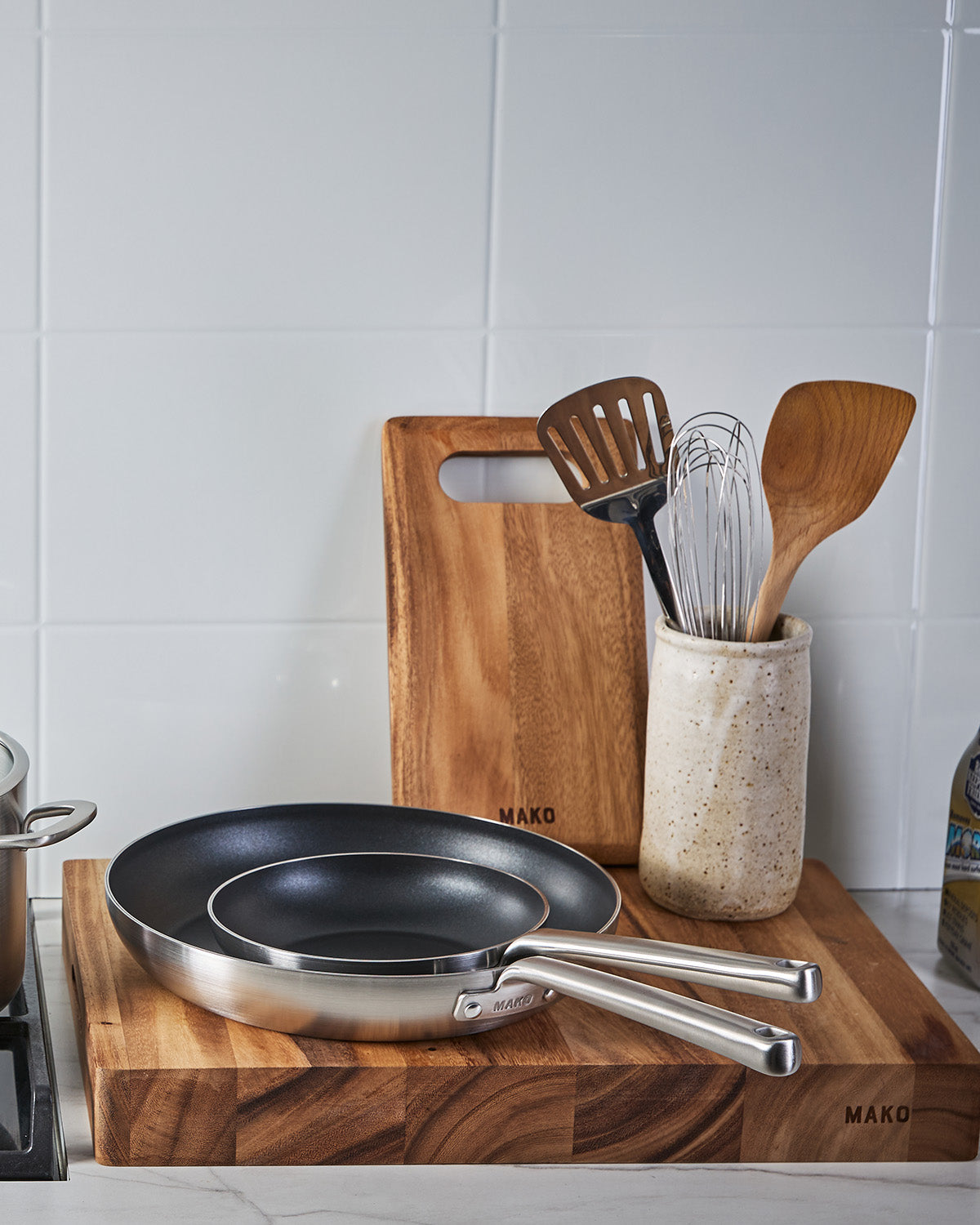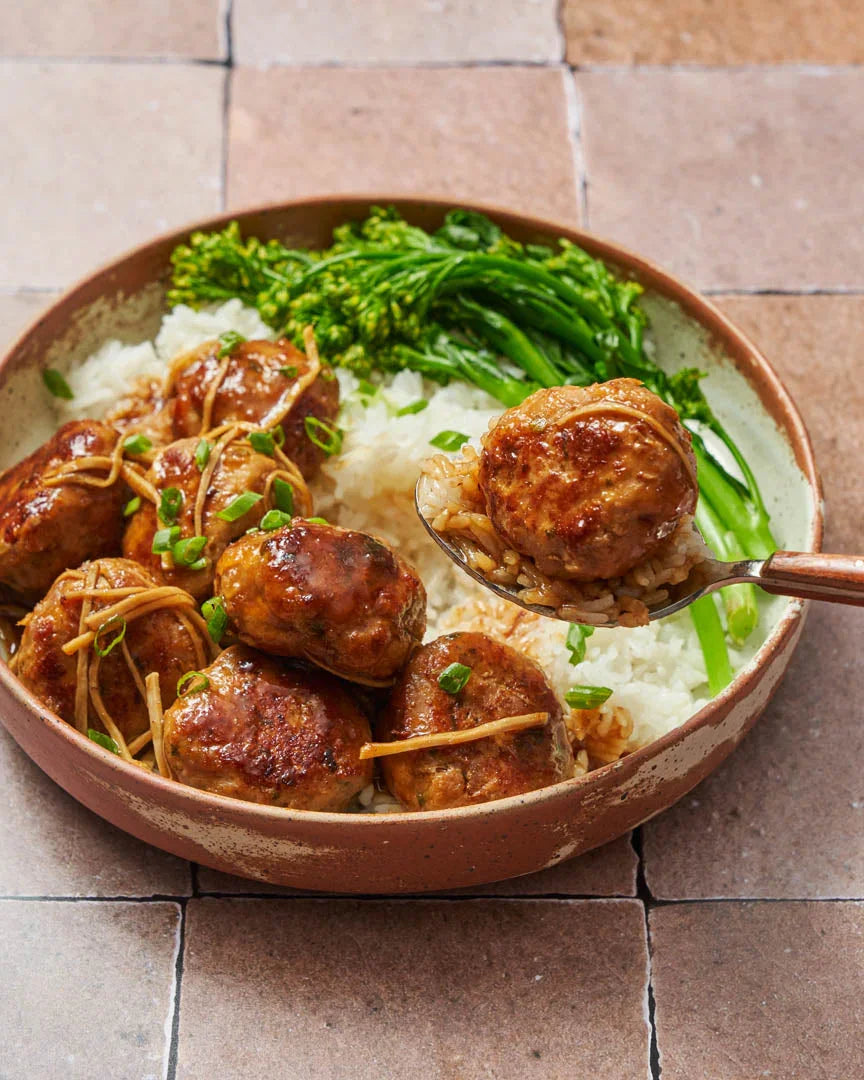
How To Care For Non-Stick pans
Versatile and with minimalist lines, there’s a lot to love about non-stick cookware. They are kitchen essentials that deserve a place in your cupboards for easy, clean, frictionless cooking when you need it.
Most non-stick surfaces are made using a man-made coating and some are more durable and better than others. But even top quality coatings require care to keep them performing at their best and it’s important to take the correct steps.
Everyday care
When your pans are new, lightly used, or you’ve been vigilant about their care, they don’t need much extra TLC. Follow these easy steps each time you use them to keep them at their best.
1. Let your pan cool before cleaning. Cold water over hot pans causes thermal shock which can damage coatings.
2. Give your pan a good rinse before washing, using warm water and a soft cloth, sponge or brush. You want to get rid of as much cooking residue as possible before going in for a full clean.
3. Apply a little mild dish-washing detergent, then gently scrub with a soft brush to remove any remaining food and grease.
4. Rinse the pan well, then thoroughly dry. If you need to stack your pan for storage, use a pot protector or cloth to protect the surface from scratching.
Cleaning burnt non-stick pans
If you’ve inadvertently left an empty pan over high heat for too long, or you’ve overheated it during cooking, the surface can burn. This is fixable but does require a bit more attention.
1. Make a solution of 2-2½ tablespoons each of baking soda and white vinegar. Add this to your pan with enough water to cover the surface, then bring the mixture to a boil over medium heat.
2. Boil the solution for a good five minutes, using a non-metal utensil to loosen any burnt-on bits from the base and side of the pan.
3. Turn off the heat, then cool the pan completely before discarding the solution.
4. Gently wash the pan in warm, soapy water, rinse it well, then dry and store.
Cleaning discoloured non-stick pans
Non-stick surfaces discolour over time. This doesn’t necessarily affect cooking but doesn’t look great. Serious discolouration could mean the surface is well-used, beginning to break down, and it’s time for a new pan.
First, try cleaning your pan using the baking soda-vinegar solution as above. For light discolouration, this generally does the trick and restores your pan. If not, consider a replacement.
Additional tips for non-stick care
Always use cooking utensils made from softer materials like wood, silicone, plastic or rubber as metal ones can scratch. Deep scratches can compromise non-stick performance.
Always cook using oil, butter or another fat in your pan as non-stick isn’t designed for dry-frying or toasting. Avoid using oil sprays which can damage the coating over time.
Don’t leave your pans over high heat for too long, empty or during cooking, this causes damage to the surface.
Clean your pans as soon after cooking as possible, cooling them first. Leaving them to sit means residual food can stick and cause deterioration of the coating. Stuck-on food also means more aggressive cleaning which can also damage the surface
SHOP NON-STICK COOKWARE
MORE READING

Salmon Sushi Bowl

Honey Soy Meatballs



